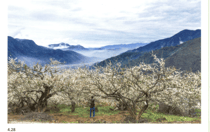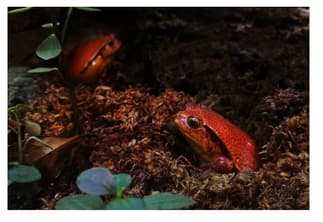Lucy Hawkins, Fran Eardley, Stuart Lloyd and, Gemma Young Solutions for Chapter: Variation and Inheritance, Exercise 18: End of Chapter Review
Lucy Hawkins Science Solutions for Exercise - Lucy Hawkins, Fran Eardley, Stuart Lloyd and, Gemma Young Solutions for Chapter: Variation and Inheritance, Exercise 18: End of Chapter Review
Attempt the free practice questions on Chapter 4: Variation and Inheritance, Exercise 18: End of Chapter Review with hints and solutions to strengthen your understanding. Cambridge Lower Secondary Science Stage 9: Student's Book solutions are prepared by Experienced Embibe Experts.
Questions from Lucy Hawkins, Fran Eardley, Stuart Lloyd and, Gemma Young Solutions for Chapter: Variation and Inheritance, Exercise 18: End of Chapter Review with Hints & Solutions
Design a classification key that could be used to identify the following invertebrates:
Worms, spiders, snails, ladybugs, slugs, ants.

Look at figure 4.28, which shows plum trees growing in Taiwan. Give one characteristic of the trees caused by the environment, one characteristic caused by their genetic material and one characteristic caused by both the environment and the genetic material.
What is selective breeding?
Explain how selective breeding could be used to breed rabbits with really fluffy ears.
Why was Darwin's trip on HMS beagle very important in helping him develop his theory of natural selection?
Suggest why Darwin's theory of natural selection was opposed when he announced it?

Look at the figure given above. Use your knowledge of natural selection to explain the following situation. The number of red frogs (like the one in the middle of the picture) decreases in subsequent generations, to the point that there are none remaining in years’ time.

Look at the figure above. Use your knowledge of natural selection to explain the following situations. The number of red frogs increases over the years and in years’ time there are more red-coloured frogs than brown frogs.
